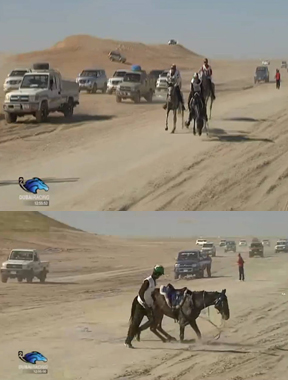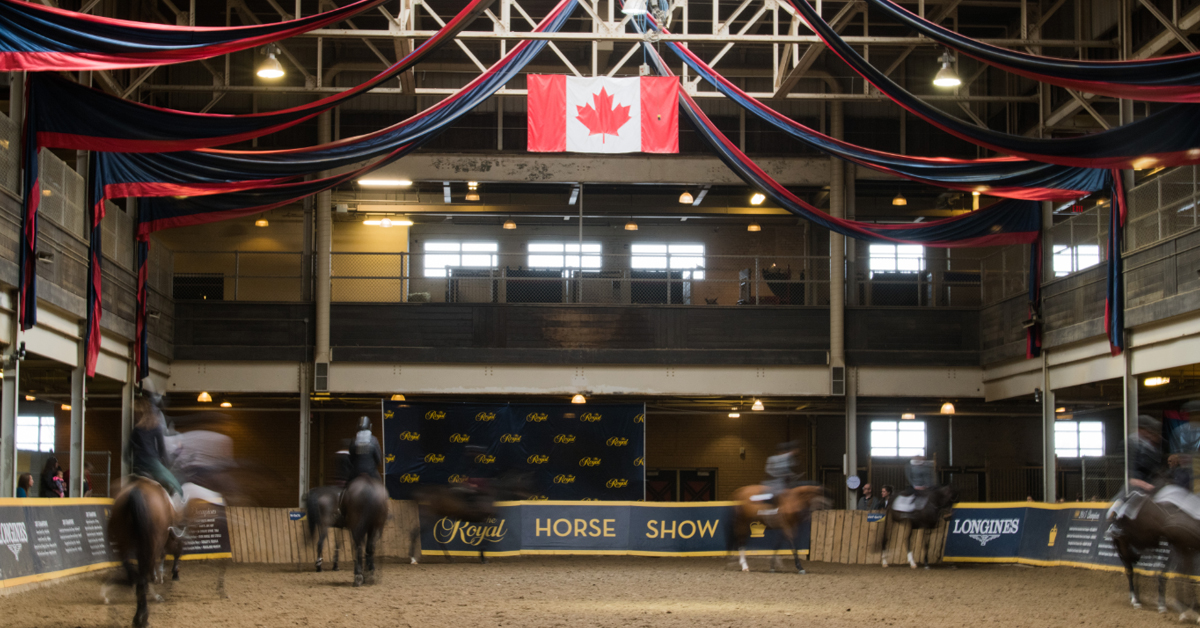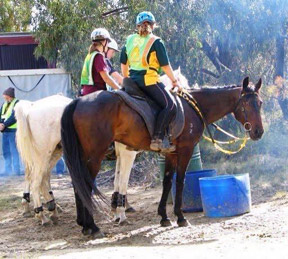WARNING: This post contains graphic, disturbing images below.
The FEI’s attempts to assure the global horse community that welfare issues in endurance are being addressed have been dealt a further blow after graphic pictures of a horse with two broken forelegs provoked outcry on social media.
Last weekend’s 120km Al Reef Cup was part of the prestigious Sheikh Mansoor Al Nayhan Global Arabian Festival in Abu Dhabi, but it was run as a CEN, not a CEI.
The FEI’s recent rule review included measures to reduce the high desert speeds associated with fractures, such as ensuring that courses contain sufficient turns and gradients to slow horses down by natural means. The FEI initially declined to comment on Al Reef, where a further two horses were reported dead, on the grounds that as a CEN it was out of FEI jurisdiction, as it was a national level competition.
Horse-Canada then pressed the FEI to indicate whether it was disappointed its welfare measures were not yet filtering into the national sports, which, in Group 7 (Middle East), involve mostly the same personnel as the FEI sport. But an FEI spokesman said it did not wish to amend its brief original statement.
The photographed horse was identified as Splitters Creek Bundy by Jay Randle after she saw the images which have gone viral. Randle was not his owner, but she trained Splitters Creek Bundy in Australia before he was sold, in 2010, to the Seeh Al Salaam (SAS) stables in Dubai. SAS is owned by Sheikh Hamdan snr, brother of Dubai ruler Sheikh Mohammed.
“Bundy,” a Standard-bred/Arabian cross, was bred by Catherine McAlpine of Splitters Creek Arabian Sport Horse Stud, New South Wales, and sent to Jay Randle at Splendacrest Endurance Training in 2008.
Randle has fond memories of this feisty character: “Bundy was a very solid horse, with excellent bone and a strong constitution. He was a bit stubborn at times, but was also endearing. His action was definitely energy-conserving, and he was nice to ride, with good manners and a good work ethic – when he wanted to work.
“He had a quirky nature, and was loved by many young and not so young riders.”
At his first 100km ride in 2009, he was disqualified after the second loop after refusing to trot back to the examining vet.
He went on to the 2009 Tom Quilty Gold Cup 160km ride at Tonimbuck, Victoria with Kimberley Ryan (seen with Bundy in our picture), in a time of 14:54.

In the top photo, Splitters Creek Bundy begins to fall forward, in the second loop of the Al Reef Cup. In the bottom photo, captured 20 seconds later, he is seen collapsing over his fractured forelegs. Images from Dubai Racing TV live stream
In the first of two images captured from the Dubai Racing TV live stream, 12-year-old Bundy can be seen towards the end of the second loop, where he was among the front runners. In this image, he starts fall forward.
The second picture, captured 20 seconds later, shows him collapsing over his fractured “cannon” bones. His companions apparently rode on and none of the battalion of vehicles stopped to help. There are unconfirmed reports that a vet did not arrive for 20 minutes.
The images were captured by members of a European monitoring group, to which a growing number of North American riders now belong. The group is watching live broadcasts from the Group 7 winter season and cataloguing rule breaches with picture evidence.
Marianne Ironside, a French-based British rider, is one of the coordinators. She highlighted growing concern and bafflement about the FEI’s inability to influence the national competitions of its member federations.
“Everyone is incredibly worried for the safety of the horses. One dead horse is a dead horse too many,” she said. “The FEI needs get involved more with national federations so that clean sport is practiced in national races.”
Splitters Creek Bundy’s complete national record is difficult to trace, but his FEI record illustrates the risks posed to horses in Middle Eastern rides when, typically, they are paired with strangers on the day. He completed the first loop at Al Reef with an average speed of 28.5kph.
In the four years he has competed in the UAE, the horse as started in 10 FEI races under nine different riders. He was eliminated for lameness in his last three FEI races.
Meanwhile, his rider Hamaid Al Falasi, who is only 16, has ridden in 21 FEI rides since 2012 on 20 different horses, completing fewer than half. He was disqualified from Bou Thib in 2014 for “not conforming to many rules.”
Since the introduction of tougher new rules, a growing proportion of UAE rides have been run as CENs.
In December, the UAE delegate made an unsuccessful request to the FEI General Assembly for a waiver on the “conflict of interest rules” – even though the Middle East is the only region where there are acknowledged problems of officials and vets associated with the leading stables “turning a blind eye” to rule-breaking .A new codex requires anyone employed by a sponsor not to officiate at competitions. The Maktoum and Nayhan families, who rule Dubai and Abu Dhabi respectively, sponsor and effectively own the horse industry in the UAE. As such, only a minority of horse persons resident are not associated with the ride sponsor is some way.
Attempts to contact the UAE federation and SAS for comment were unsuccessful.
More from Horse Sport:





